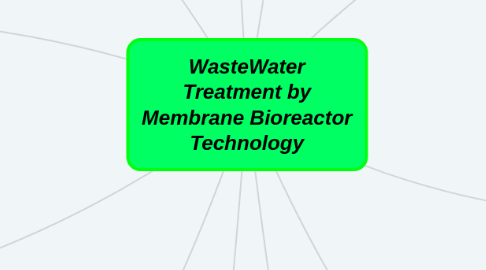
1. Disadvantages
1.1. Concentration polarisation
1.2. Fouling
1.3. low selectivity
1.4. Short membrane life-time
2. Viable Solutions
2.1. install sufficient pre-treatment to prevent clogging
2.2. increase the air flow rate to control membrane fouling
2.3. add hydraulic retention time (HRT) and sludge retention time (SRT).
3. Membrane Processes
3.1. Dead-end filtraion
3.1.1. feed flow is along the membrane surface, retained particles accumulate and thickness increases with filtration time, hence decreases permeation rate.
3.2. Cross-flow filtration
3.2.1. feed flow is along the membrane surface, part of retained solutes accumulate. Deposition of the solutes inside the pores of membrane and at the membrane surface called 'fouling'.
4. Membrane Materials
4.1. Polycarbonate
4.2. Polypropylene
4.3. Polyamide
4.4. Polyetherimide
4.5. Cellulose-esters
5. Membrane Technology Categories
5.1. Micro filtration
5.1.1. Filtration by particle size and membrane size is about 0.1 -10 um
5.2. Ultra filtartion
5.2.1. filters molecules of specific size and weight, membrane size 1λ- 0.01 um
5.3. Nano filtration
5.3.1. partial desalination, membrane size 10λ -0.001 um
5.4. Reverse osmosis
5.4.1. Complete desalination, membrane size 10λ- 0.001 um
5.5. Electro Dialysis
5.5.1. used to separate ions from water solutions by the effect of a difference of electric potential.
6. Membrane Types
6.1. Flat membrane
6.2. Tubular Membrane
6.2.1. Hollow fibre
6.2.1.1. Diameter < 0.5mm
6.2.2. Capillary
6.2.2.1. Diameter 0.5 - 5mm
6.2.3. Tubular
6.2.3.1. Diameter < 5mm
7. Uses
7.1. Produce potable water by reverse osmosis
7.2. Clean industrial effluents
7.3. Remove toxins
7.4. Recover valuable constituents
7.5. Fractionate macromolecular solutions in food
7.6. Release drugs such as nitroglycerin in medical treatment
8. Advantages
8.1. Cost Effective
8.2. Faster system start-ups
8.3. Small footprint
8.4. Energy recovery
8.5. Quality improvement
8.6. Minimal operating labour
8.7. minimal generation of biosludge
9. Operating Parameters
9.1. TMP(Transmembrane pressure)
9.1.1. hydrostatic pressure gradient across membrane. Driving force for mass transfer. measured in bar/mbar
9.2. Permeability
9.2.1. extent to which membrane is permeable for specific component. measure in L/m2/h/bar
9.3. Filtration flux
9.3.1. measured in L/m2/h
10. Configurations
10.1. Submerged
10.1.1. Coarse bubble diffuser
10.1.2. Reduce buildup material at surface
10.1.3. maintain flux and increase operation life
10.2. Sidestream
10.2.1. fine bubble diffuser
10.2.2. high operational flux
10.2.3. Rigorous cleaning required and reduced life
